The Bass art museum reveals new look after two-year revamp
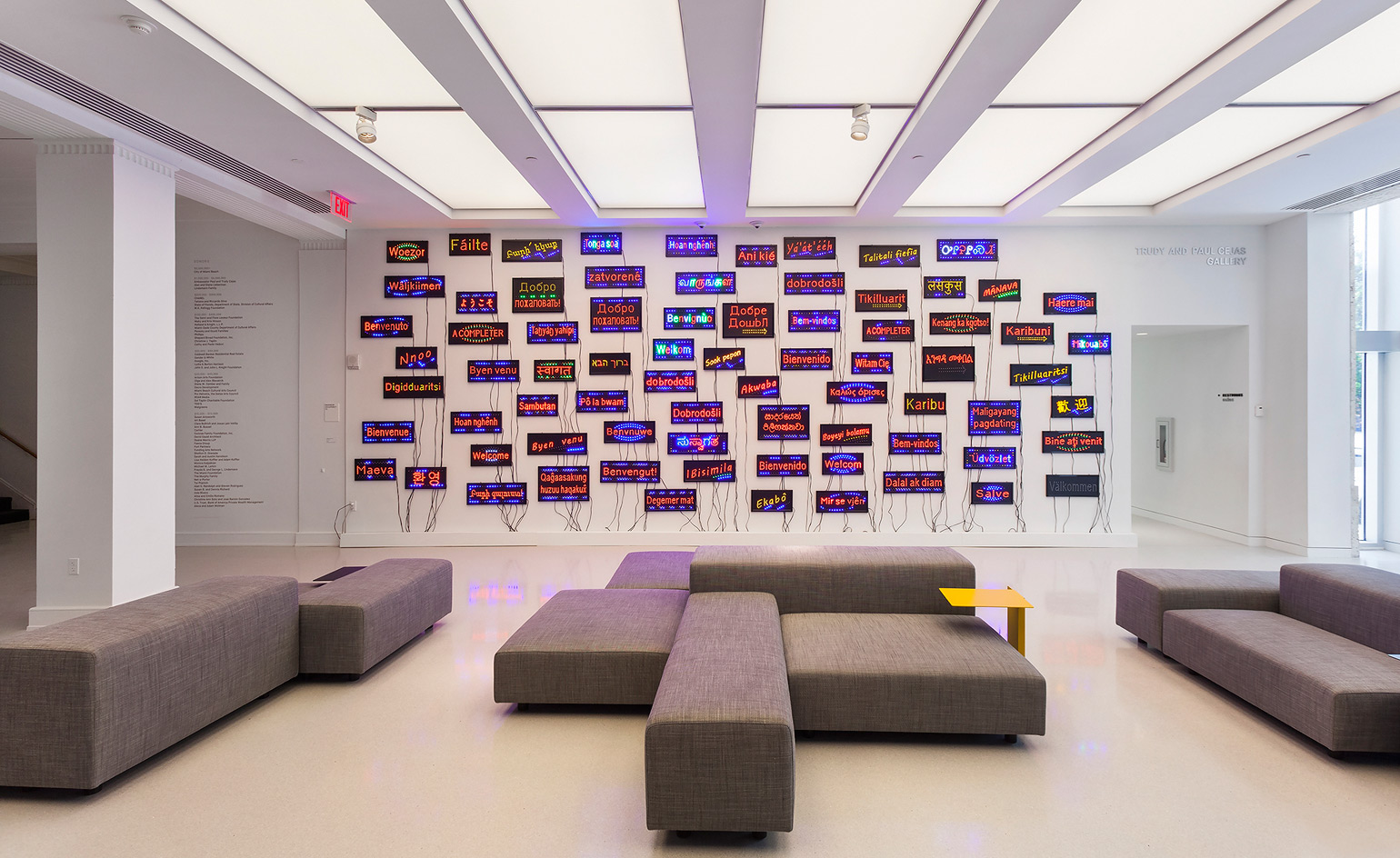
Miami Beach’s museum of contemporary art, The Bass is set to emerge from a $12 million refit tomorrow. Architects David Gauld and Arata Isozaki, who both worked on the extension of the museum 16 years ago, spearheaded the renovation, which broke ground in 2015. A significant reconfiguration of the building’s internal structure has resulted in a near 50 per cent increase in programmable space, including four new galleries, a museum store, a café catered by Thierry Isambert, and a dedicated education facility.
The museum was established in 1964 by the City of Miami Beach after the donation of a private collection by residents John and Johanna Bass. It opened in a 1930s art deco building – formerly the Miami Beach Public Library and Art Center – designed by Russell Pancoast, and was also once the first public exhibition space for art in South Florida. In 2001, the museum underwent its first major expansion led by Isozaki and his firm, who added a new wing and second level to house a total of 16,000 sq ft of exhibition space.
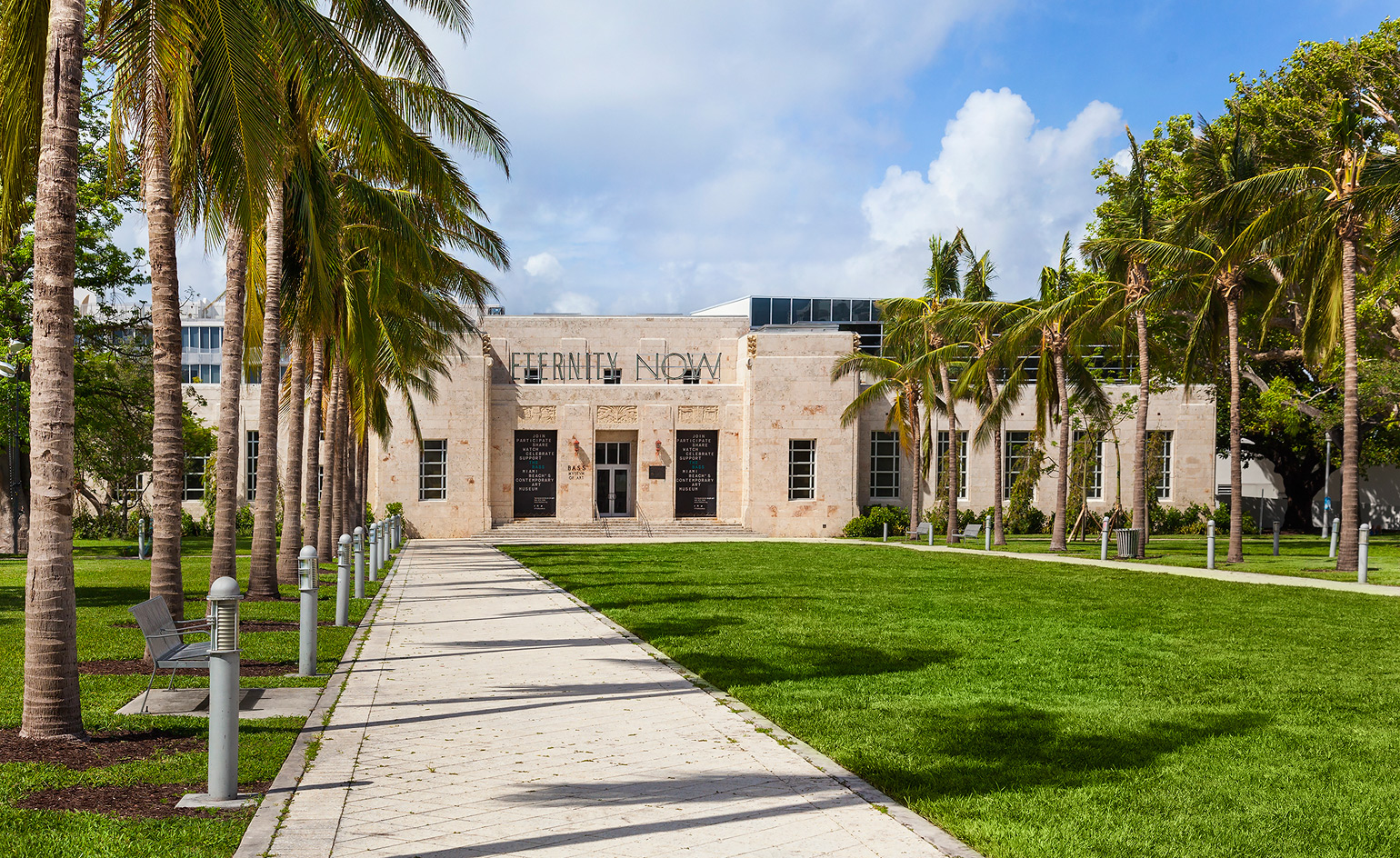
The historic 1930s building was designed by Russell Pancoast. Courtesy of The Bass, Miami Beach
‘From the beginning, one of the most important values of this construction project was that we needed to be in the same footprint – [the museum] had to be sustainable once we opened,’ says Silvia Karman Cubiñá, director of The Bass museum. In addition to the new galleries, a pair of outdoor terraces – were unusable for most of the year due to Miami’s heat – are now roofed. The rear of the museum, meanwhile, was readapted into the Creativity Center, with classrooms and a meeting room now open to the community.
Gauld’s greatest challenge, he explained, was to remain respectful of his mentor Isozaki’s design while catering to museum’s needs. ‘[Isozaki] is very philosophical about that,’ New York-based Gauld told us at a preview of the new space. ‘When Isozaki would design a building, he would draw it as a ruin afterwards, in anticipation that not only would it be changed but it would also be destroyed afterwards.’ With the 86-year-old Japanese architect’s blessing, Gauld set to work, most notably stripping out a large ramp in the lobby from Isozaki’s design and replacing it with a new staircase that ‘rationalised the circulation’.
A post shared by Wallpaper* (@wallpapermag)
A photo posted by on
While much the space sparkles with modern fittings and furnishings, Gauld has remained respectful of his predecessors Pancoast and Isozaki, using materials that preserve the aesthetic of the building. The museum consulted with Miami’s Historic Preservation Board, with Cubiñá admitting she was grateful for the restrictions imposed on the design. The circular lighting in the new courtyard areas nods to the art deco heritage of Miami, while new walls erected in Florida keystone circle back to the building’s original design.
Gauld worked with New York studio Project-Space, a New York-based studio founded by Jonathan Caplan, to design the interiors for The Bass’ public spaces. ‘There were essentially two components to [my] brief: firstly to create a fluent, harmonious relationship between the gallery area and the multi-purpose spaces leading to and from it,’ explains Caplan, ‘and secondly to allow these separate spaces to each have a discrete identity and dynamic of their own.’
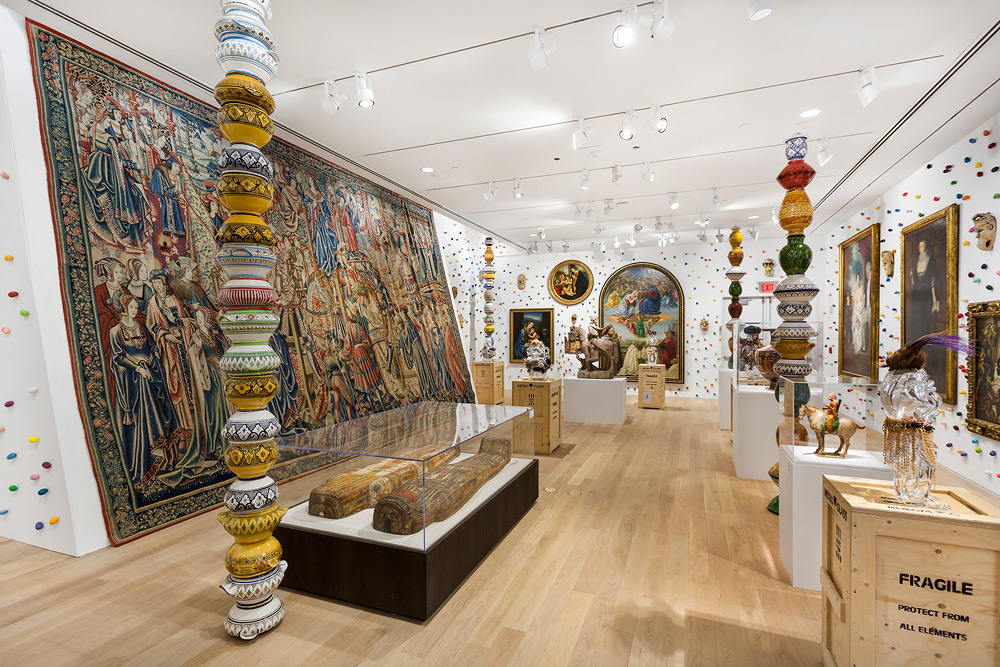
Installation view of Pascale Marthine Tayou’s exhibition ‘Beautiful’. Courtesy of The Bass, Miami Beach
Caplan argues that the importance of these spaces are often overlooked or underestimated. ‘This can sometimes result in such spaces, and by association the museum as a whole, becoming mundane, off-putting – at worst a dead-zone,’ says Caplan. ‘We wanted to not just minimise, but reverse this, because these spaces are not only the first and last impressions a museum gives to the visitor, but in this case they are also spatially at the centre of the museum.’ Cubiñá agrees that the new interiors have made the lobby more ‘porous’, drawing visitors into the museum.
Upstairs, Ugo Rondinone has taken over the entire of the newly designed second floor with ‘good evening beautiful blue’, part of a major multi-institution retrospective comprising works that span three decades of the Swiss artist’s practice, from the late 1990s to the present. Rondinone is in good company for the museum’s reopening: Cameroon artist Pascale Marthine Tayou has remixed his own works with pieces from The Bass museum’s permanent collection in the ground-floor gallery. Additionally, a newly commissioned, site-specific work by Tayou called Welcome Wall (2015), comprising animated LED signs that read ‘welcome’ in over 70 languages, broadcasts a profound message of inclusion from the newly revamped museum’s lobby.

The museum’s freshly revamped courtyard. Courtesy of The Bass, Miami Beach
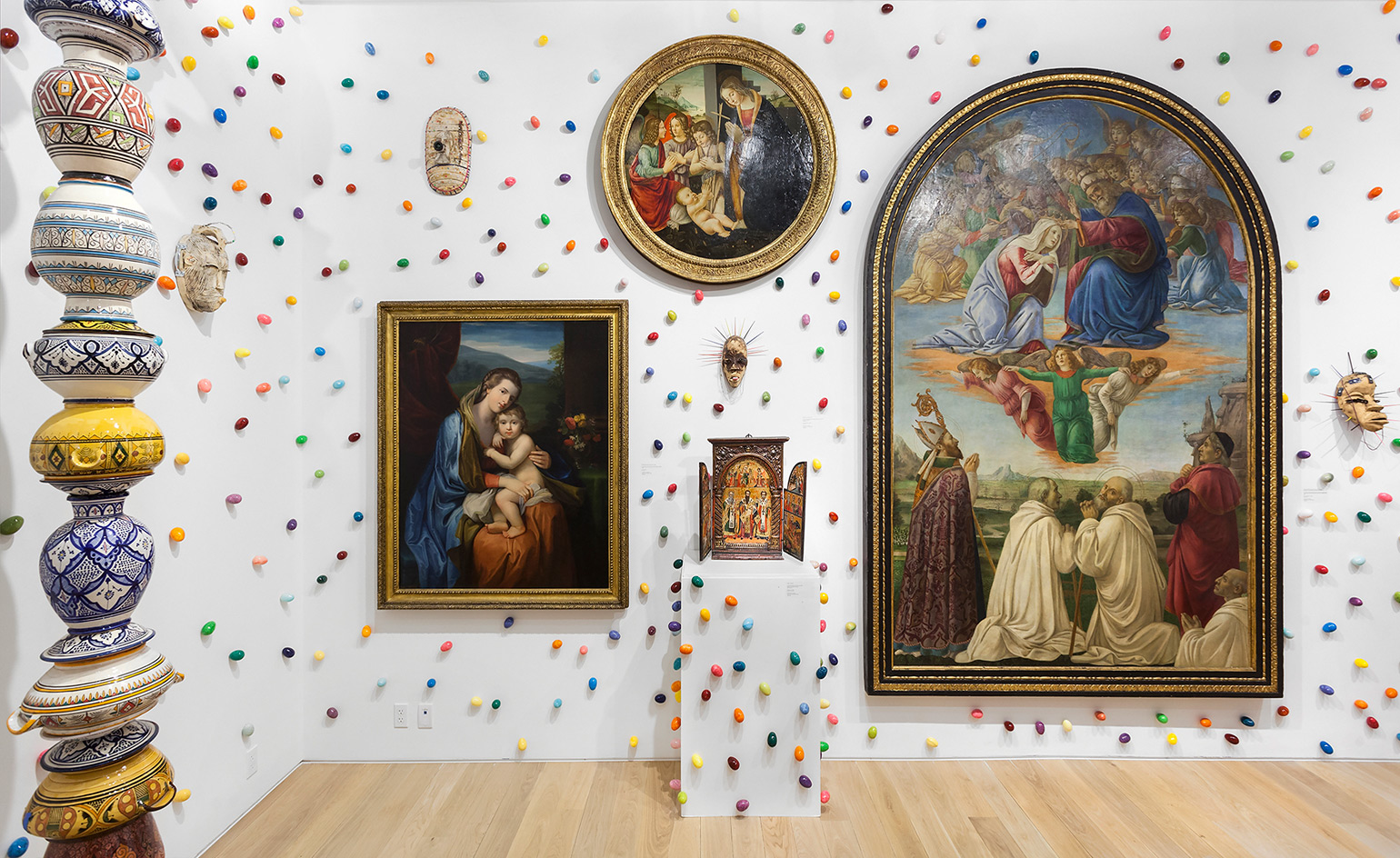
Installation view of Pascale Marthine Tayou’s exhibition ‘Beautiful’. Courtesy of The Bass, Miami Beach
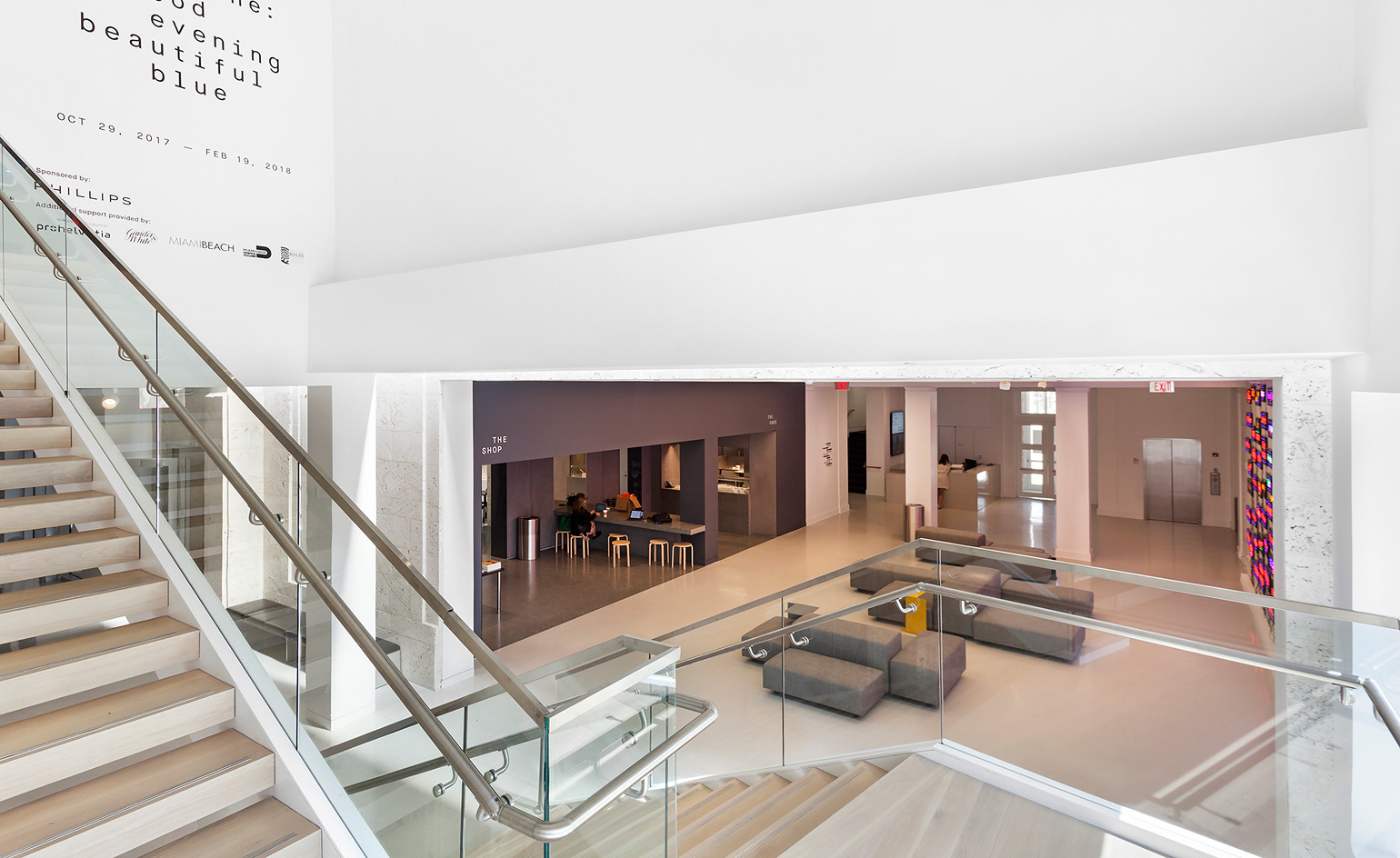
A new staircase connects the ground and first floors. Courtesy of The Bass, Miami Beach
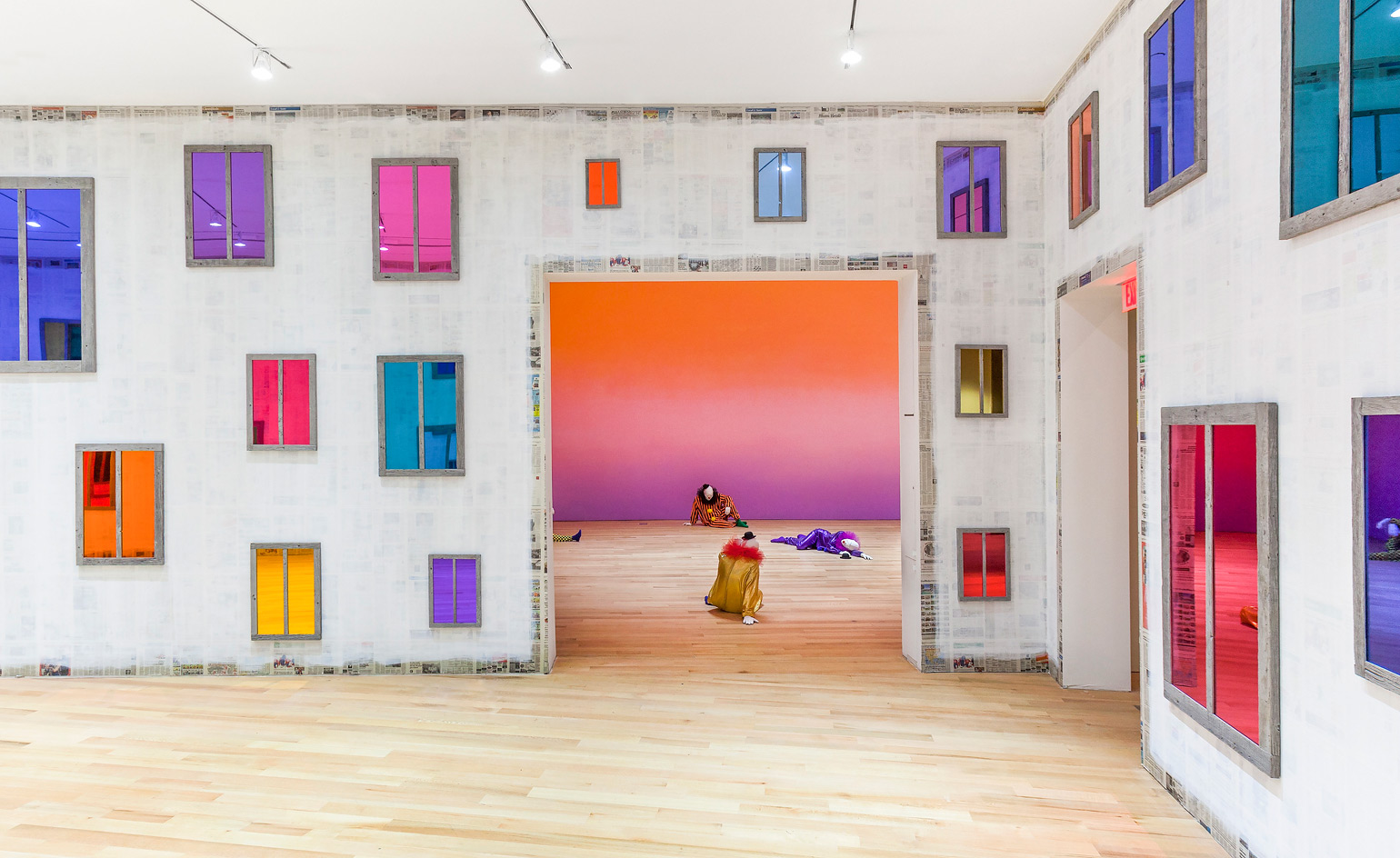
Installation view of clockwork for oracles II, 2008, and vocabulary of solitude, 2014-2016, both by Ugo Rondinone, part of the artist’s exhibition ‘good evening beautiful blue’. Courtesy of The Bass, Miami Beach
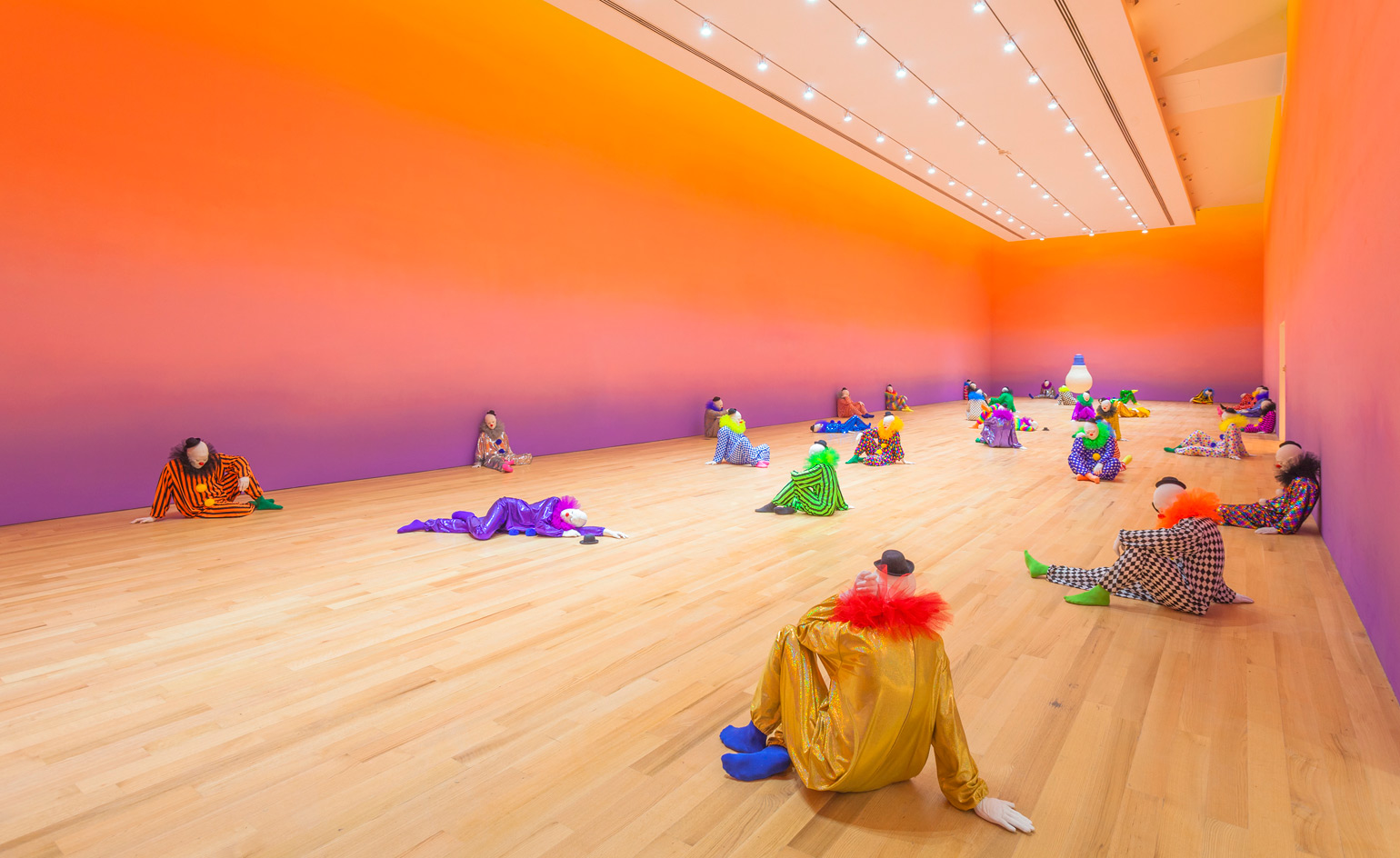
vocabulary of solitude, 2014-2016, by Ugo Rondinone. Courtesy of The Bass, Miami Beach
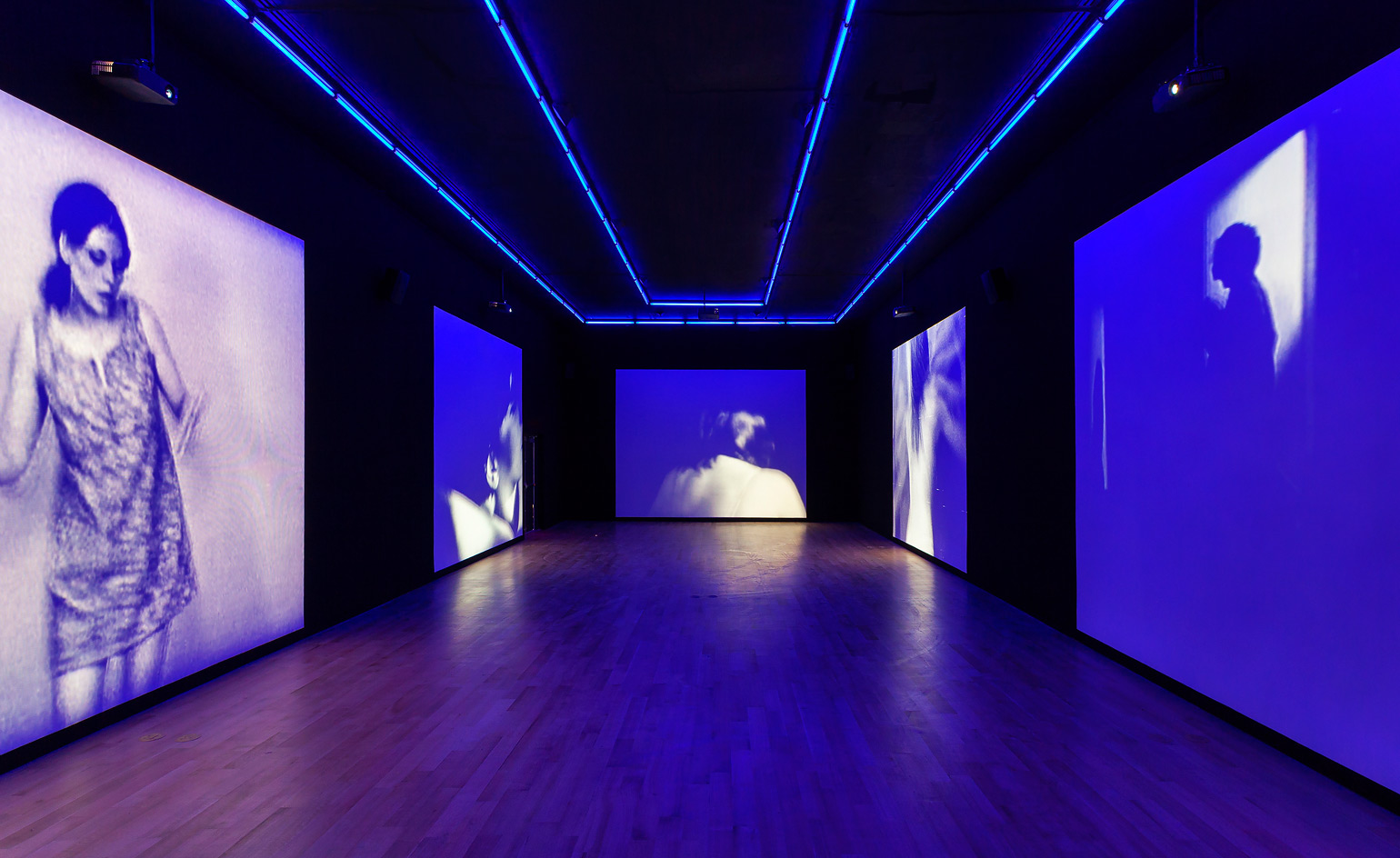
It’s late It’s late and the wind carries a faint sound as it moves through the trees. It could be anything. The jingling of little bells perhaps, or the tiny flickering out of tiny lives. I stroll down the sidewalk and close my eyes and open them and wait for my mind to go perfectly blank. Like a room no one has ever entered, a room without any doors or windows. A place where nothing happens, 1999–2000, by Ugo Rondinone. Courtesy of The Bass, Miami Beach
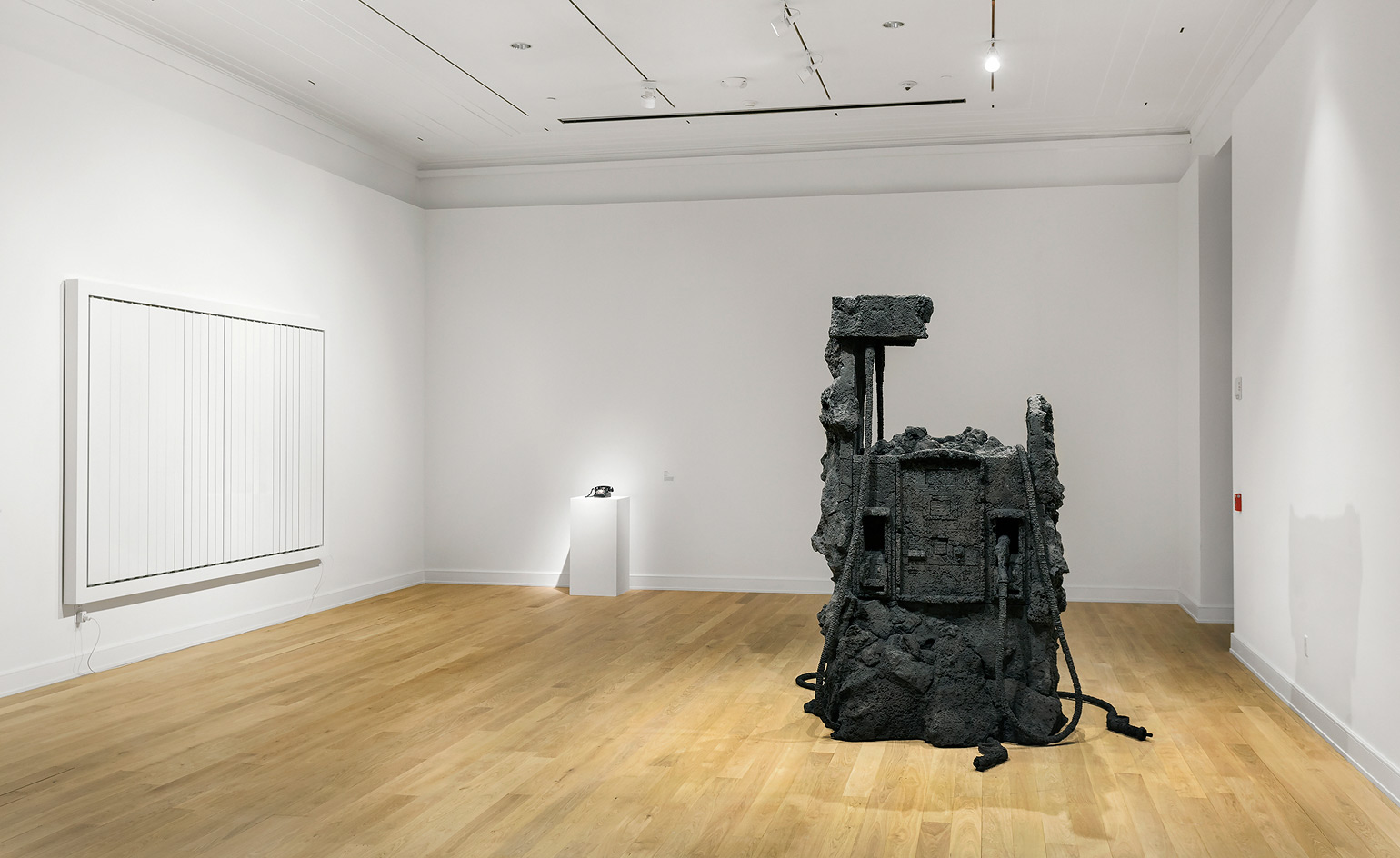
Recent acquisitions on view at The Bass. Courtesy of The Bass, Miami Beach
INFORMATION
The museum reopens on 29 October. Ugo Rondinone’s exhibition ‘good evening beautiful blue’ is on view until 19 February 2018; and Pascale Marthine Tayou’s exhibition ‘Beautiful’ is on view until 2 April 2018. For more information, visit The Bass website
ADDRESS
The Bass
2100 Collins Avenue
Miami Beach FL 33139
Wallpaper* Newsletter
Receive our daily digest of inspiration, escapism and design stories from around the world direct to your inbox.
-
 All-In is the Paris-based label making full-force fashion for main character dressing
All-In is the Paris-based label making full-force fashion for main character dressingPart of our monthly Uprising series, Wallpaper* meets Benjamin Barron and Bror August Vestbø of All-In, the LVMH Prize-nominated label which bases its collections on a riotous cast of characters – real and imagined
By Orla Brennan
-
 Maserati joins forces with Giorgetti for a turbo-charged relationship
Maserati joins forces with Giorgetti for a turbo-charged relationshipAnnouncing their marriage during Milan Design Week, the brands unveiled a collection, a car and a long term commitment
By Hugo Macdonald
-
 Through an innovative new training program, Poltrona Frau aims to safeguard Italian craft
Through an innovative new training program, Poltrona Frau aims to safeguard Italian craftThe heritage furniture manufacturer is training a new generation of leather artisans
By Cristina Kiran Piotti
-
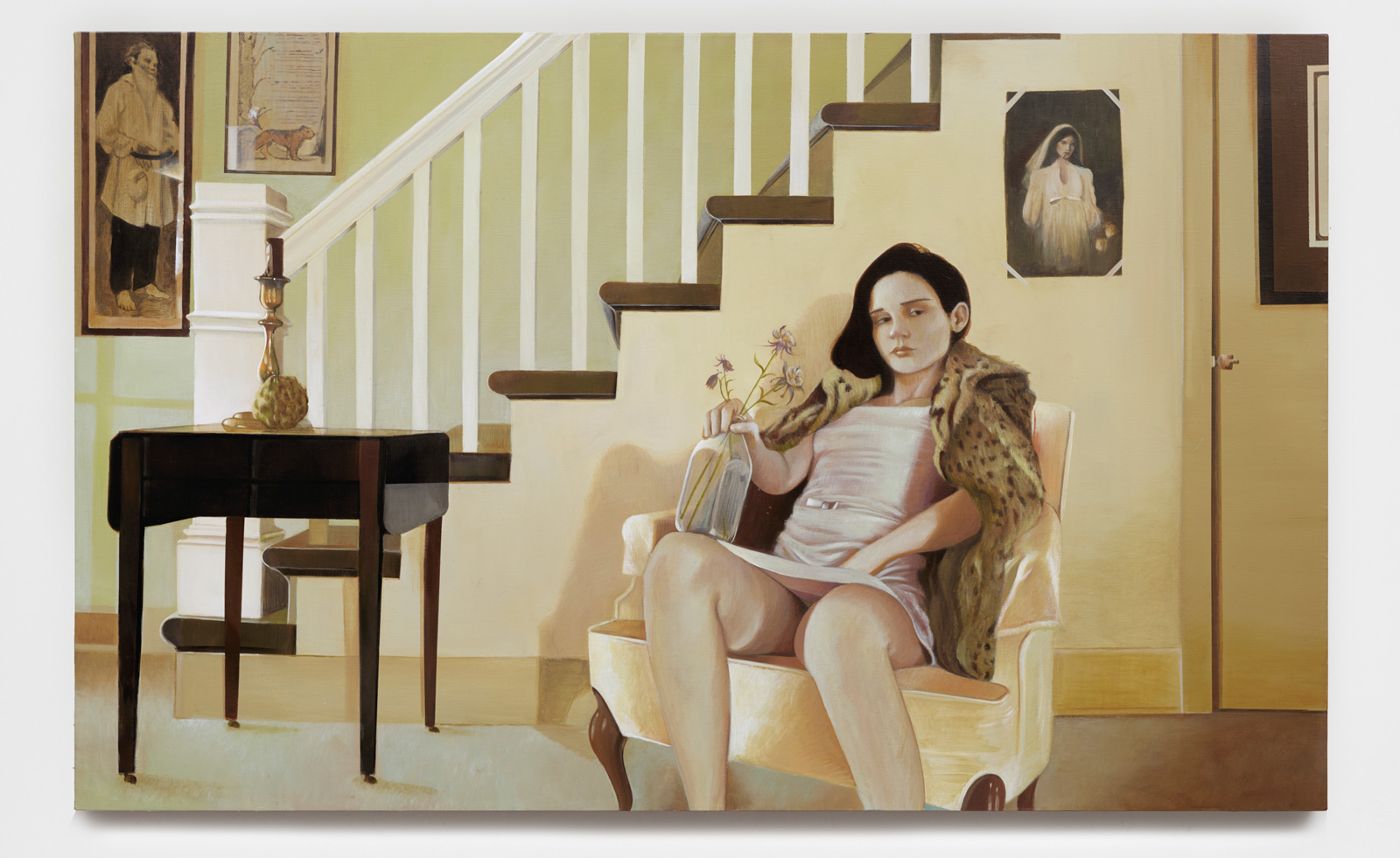 Leonard Baby's paintings reflect on his fundamentalist upbringing, a decade after he left the church
Leonard Baby's paintings reflect on his fundamentalist upbringing, a decade after he left the churchThe American artist considers depression and the suppressed queerness of his childhood in a series of intensely personal paintings, on show at Half Gallery, New York
By Orla Brennan
-
 Desert X 2025 review: a new American dream grows in the Coachella Valley
Desert X 2025 review: a new American dream grows in the Coachella ValleyWill Jennings reports from the epic California art festival. Here are the highlights
By Will Jennings
-
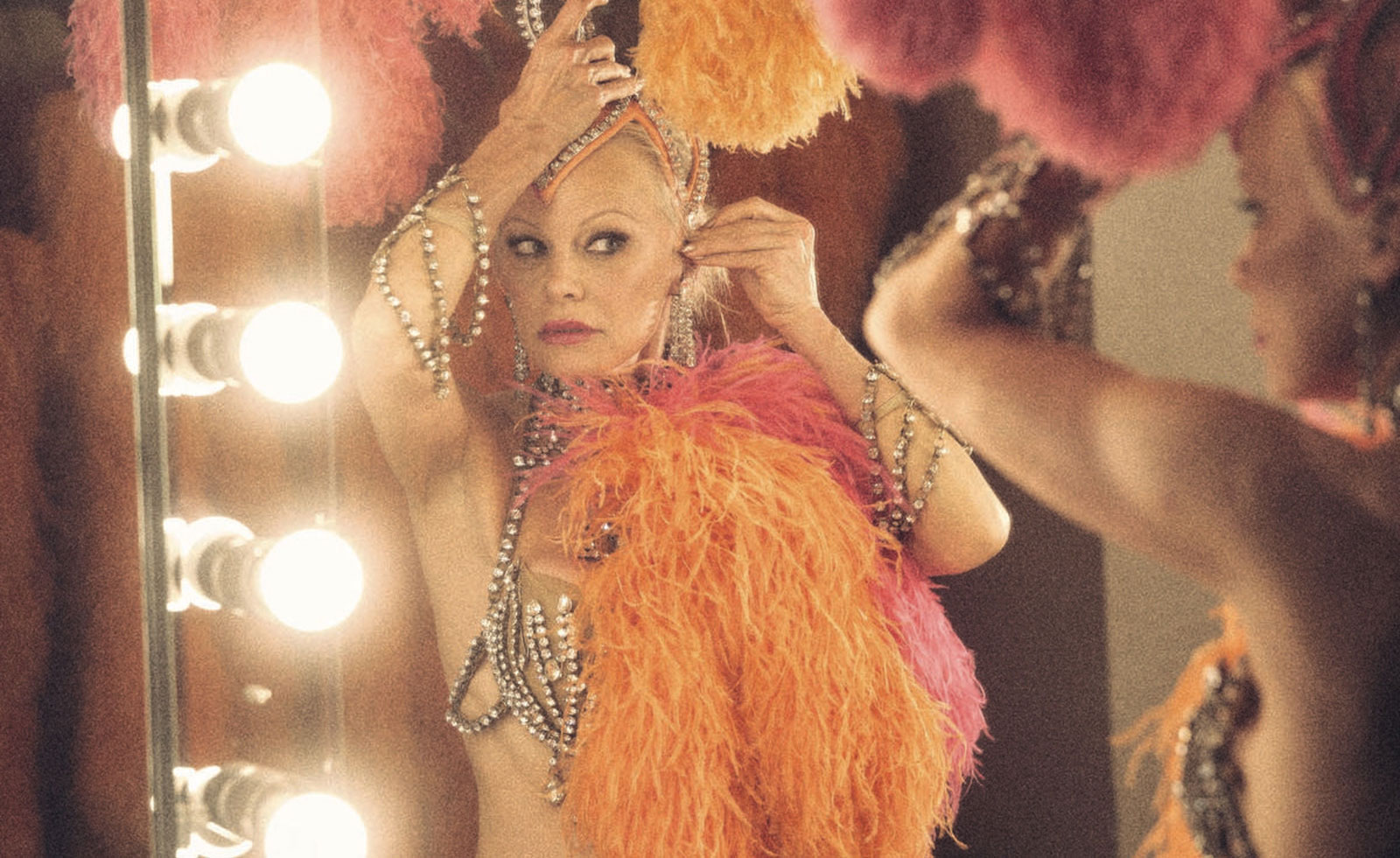 In ‘The Last Showgirl’, nostalgia is a drug like any other
In ‘The Last Showgirl’, nostalgia is a drug like any otherGia Coppola takes us to Las Vegas after the party has ended in new film starring Pamela Anderson, The Last Showgirl
By Billie Walker
-
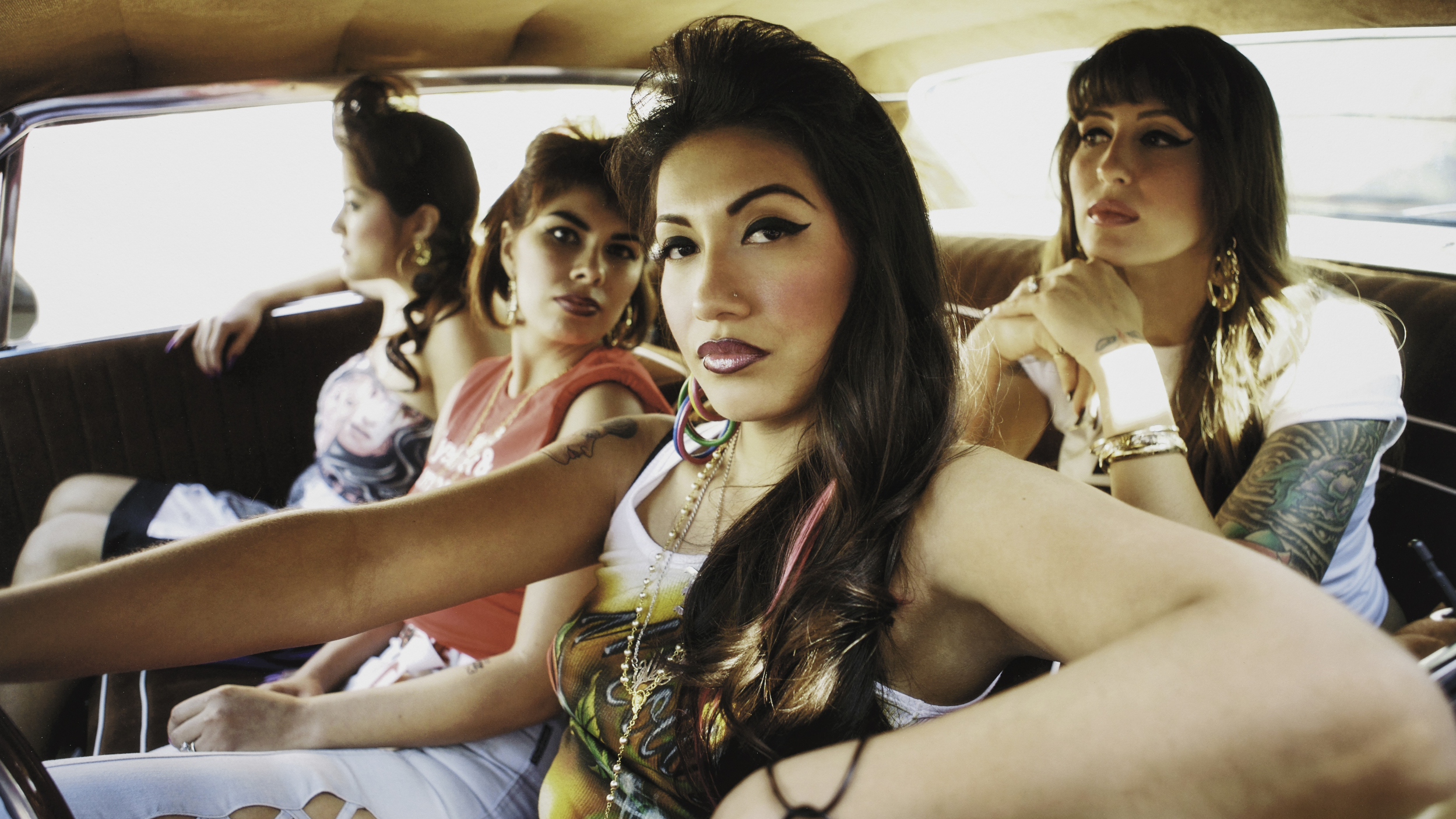 ‘American Photography’: centuries-spanning show reveals timely truths
‘American Photography’: centuries-spanning show reveals timely truthsAt the Rijksmuseum in Amsterdam, Europe’s first major survey of American photography reveals the contradictions and complexities that have long defined this world superpower
By Daisy Woodward
-
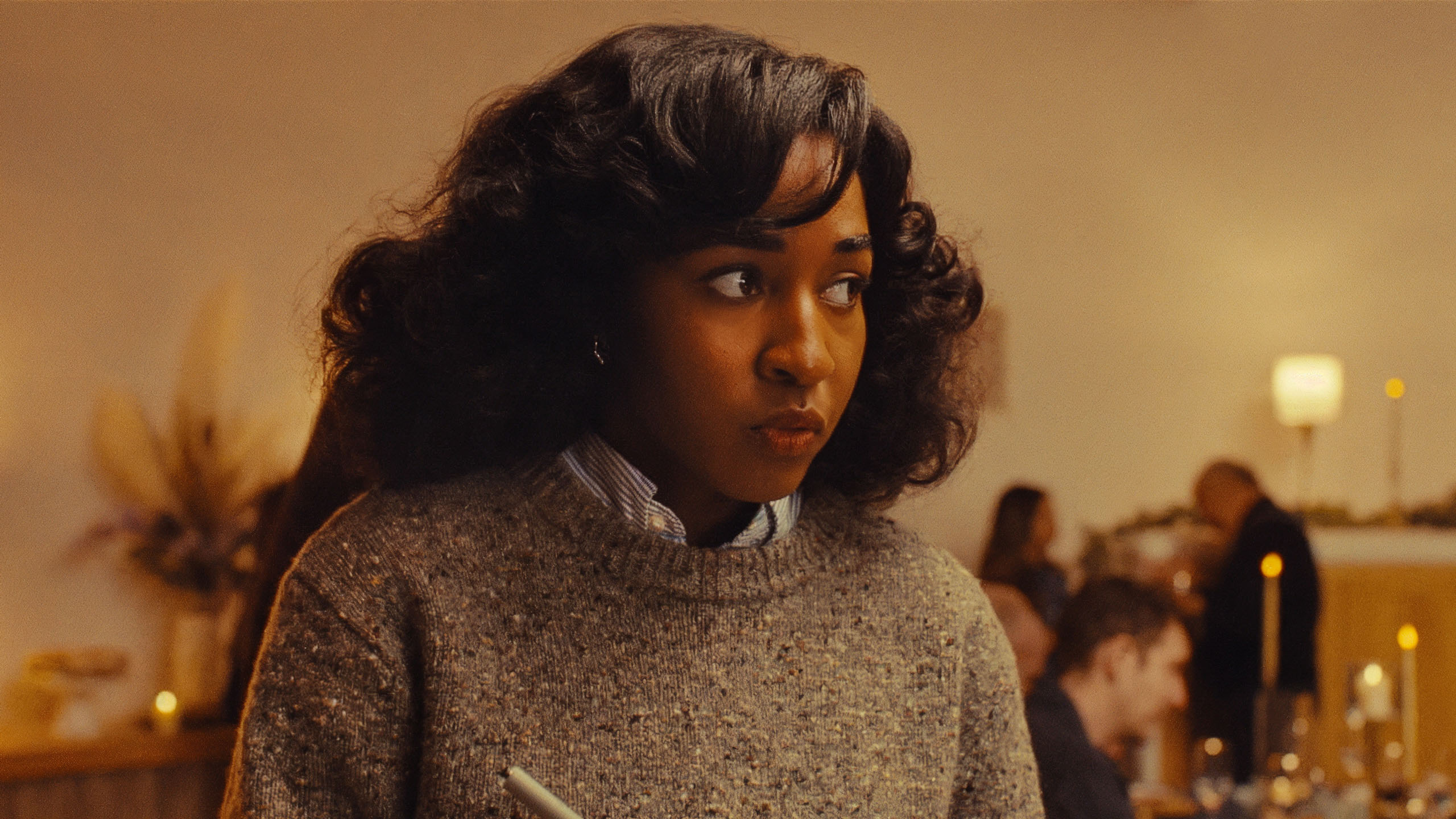 Sundance Film Festival 2025: The films we can't wait to watch
Sundance Film Festival 2025: The films we can't wait to watchSundance Film Festival, which runs 23 January - 2 February, has long been considered a hub of cinematic innovation. These are the ones to watch from this year’s premieres
By Stefania Sarrubba
-
 What is RedNote? Inside the social media app drawing American users ahead of the US TikTok ban
What is RedNote? Inside the social media app drawing American users ahead of the US TikTok banDownloads of the Chinese-owned platform have spiked as US users look for an alternative to TikTok, which faces a ban on national security grounds. What is Rednote, and what are the implications of its ascent?
By Anna Solomon
-
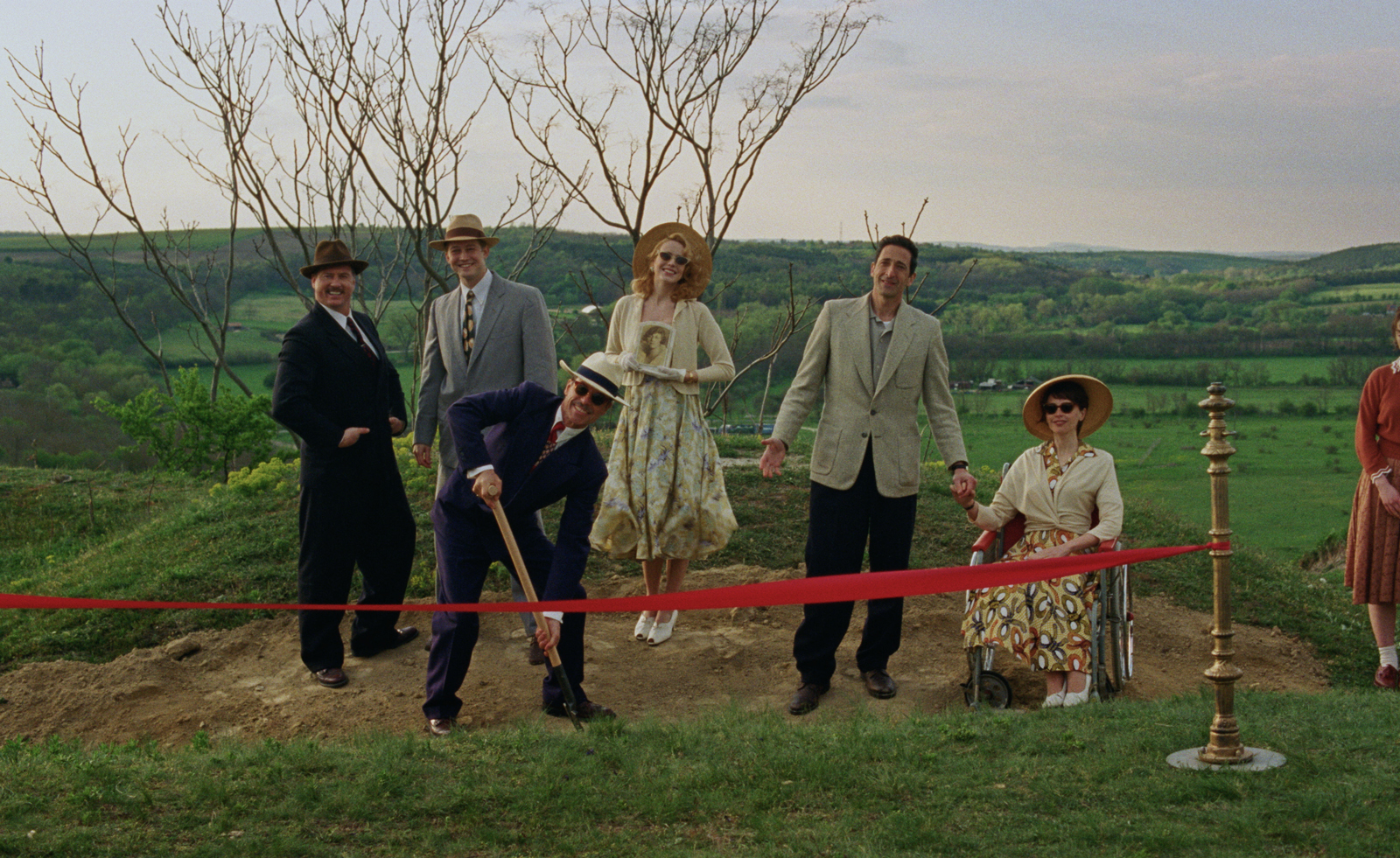 Architecture and the new world: The Brutalist reframes the American dream
Architecture and the new world: The Brutalist reframes the American dreamBrady Corbet’s third feature film, The Brutalist, demonstrates how violence is a building block for ideology
By Billie Walker
-
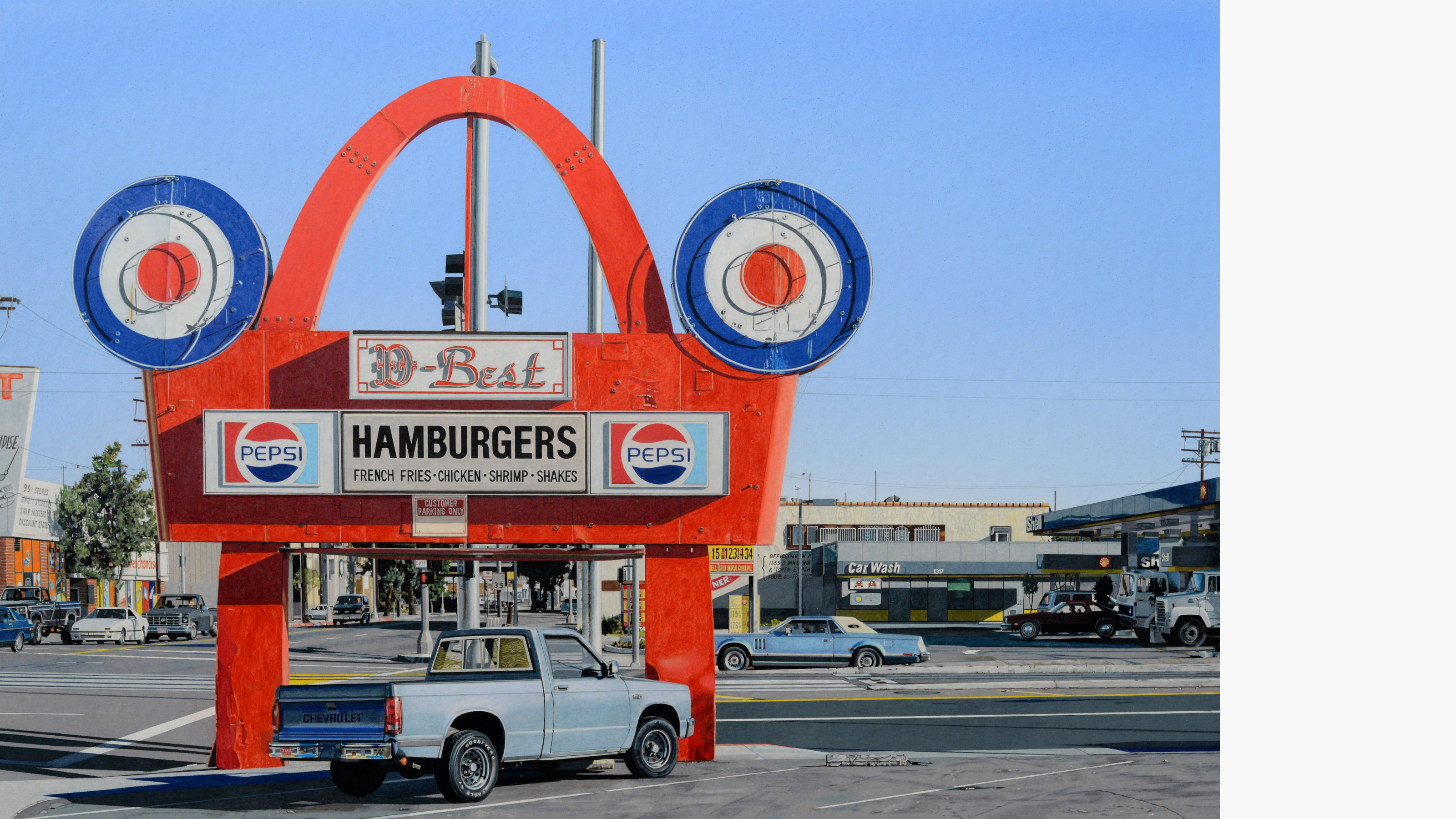 ‘Gas Tank City’, a new monograph by Andrew Holmes, is a photorealist eye on the American West
‘Gas Tank City’, a new monograph by Andrew Holmes, is a photorealist eye on the American West‘Gas Tank City’ chronicles the artist’s journey across truck-stop America, creating meticulous drawings of fleeting moments
By Jonathan Bell